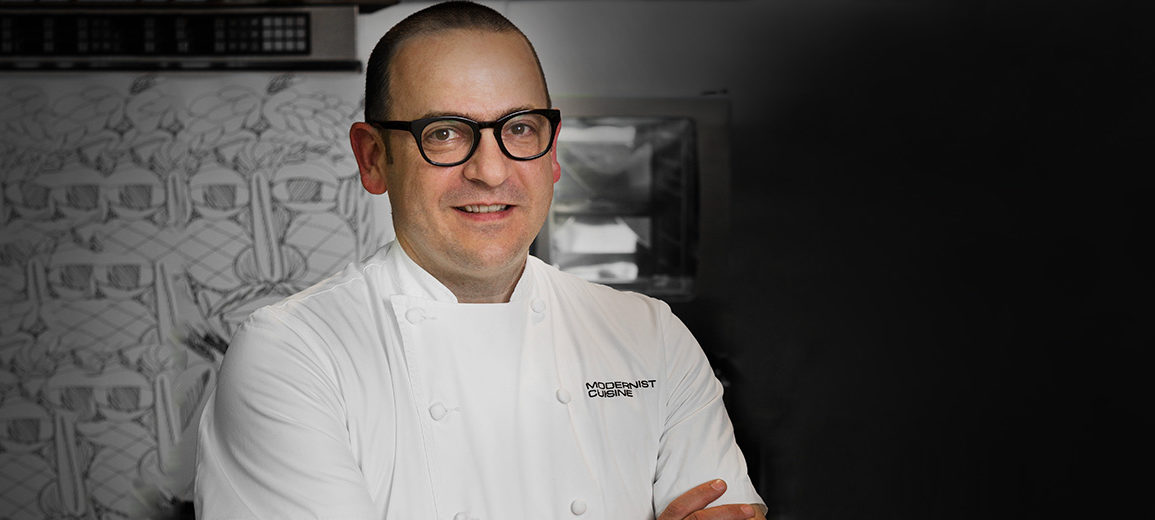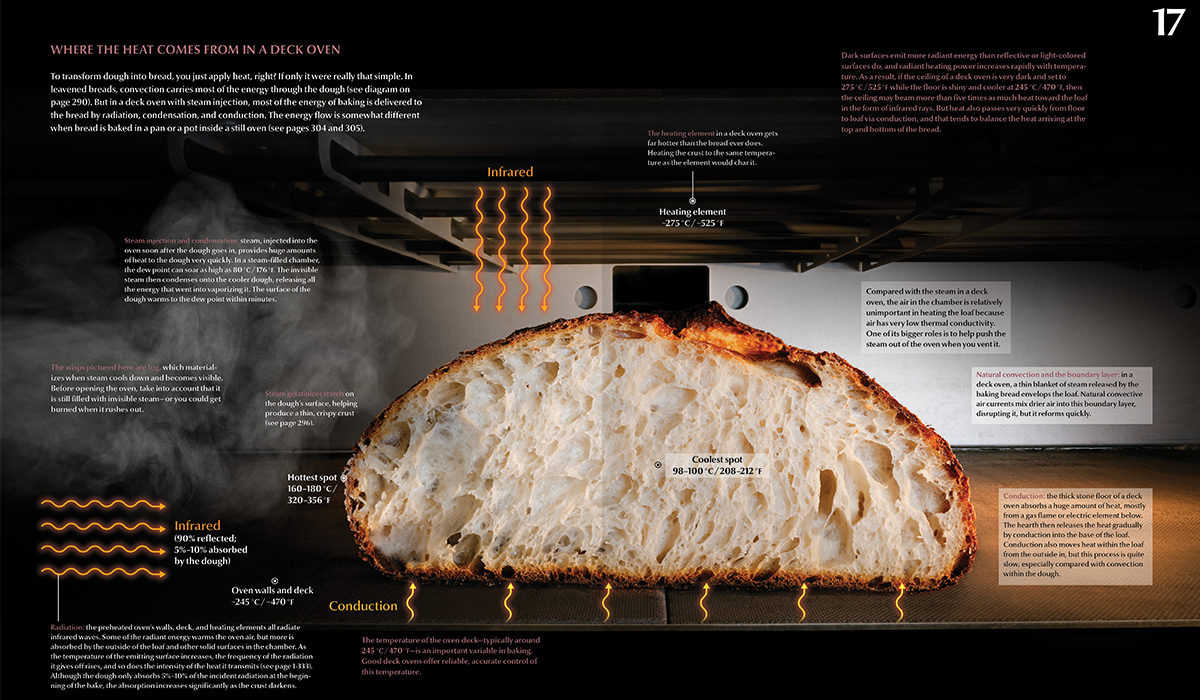Francisco Migoya, grew up in Mexico City from Italian-American and Spanish parents. He planned on going to art school to study drawing, painting and sculpture, yet after getting a stage in a Mexico City hotel he quickly realized his love for the kitchen. While at culinary school at Centro de Estudios Superiores de San Angel in Mexico City he received a full scholarship to study French gastronomy at the Lycée d’Hôtellerie et de Tourisme in Strasbourg, France.
After finishing his studies, Migoya then moved to New York where he worked at multiple restaurants, before landing his first job as a Pastry Chef at The River Café in Brooklyn. He then went on to work as Pastry Chef at Veritas in New York City and as Executive Pastry Chef at both The French Laundry and Bouchon Bakery.
He then went on to work as a professor at The Culinary Institute of America (CIA) in Hyde Park, NY where he also authored three immersive pastry books: Frozen Desserts, The Modern Café, and The Elements of Dessert.
Migoya is now the Head Chef at Modernist Cuisine where he leads the team in culinary research, most recently developing new techniques and recipes for the newly released Modernist Bread: The Art and Science, on sale now.
We had the chance to catch up with Chef Francisco and get the low-down on Modernist Bread, his food thought, and what is next for the Modernist Cuisine team.
How did the opportunity to be the head chef at Modernist Cuisine come about?
When Nathan was looking for a chef to head up this project, he reached out to some bakers and pastry chefs, and some of them happened to be friends of mine. I don’t think he was too familiar with me at that point, but once he dug into what my background was, I think it piqued his interest. He wanted someone who had a three-Michelin-star cooking experience, and was a pastry chef but not exactly a baker. Nathan had a good explanation for that. It’s because bakers need to produce five-dollar items, so there is only so much attention to detail that goes with that. Whereas, if you work at a three-Michelin-star restaurant, there is a high level of attention to detail and perfection. There is no compromise to the details. It’s a different type of vision that you need to have for the product.
When you are working in that environment, the pressure is greater to produce as close to perfection as possible, day in and day out. There is a difference in providing someone with a five-dollar daily experience versus providing someone with a $300–$500 meal when people are celebrating special occasions and it needs to be just right. In addition to that background knowledge, I have also written books and have taught for nine years. So Nathan felt that I was a good fit to join the team. I was first approached by a recruiter, and when I got the voice mail I was like “Of course, I could start work right now!”. Working here has always been an absolute yes for me. I started my job here in January 2014.
Modernist Bread was a four-year project with some of the most intensive research on the subject. What were some of your own hypotheses and or theories you wanted to find answers to or were curious about?
Sometimes you don’t know what questions to ask until you start doing the experiments. You start wondering why certain things that sound outlandish or absurd are held to be true. For example, the whole story of utilizing your raisins to get your starter going for sourdough. On a microbiological level, it didn’t seem to make a lot of sense that the yeast on raisins would be happy to also eat the yeast on wheat. So, what we did was a side-by-side experiment comparing the control of just water and flour versus using inoculated raisin water and flour versus pressure-cooked inoculated raisin water and flour. In the end, we learned that all you need is water and flour to make a starter. This is important because there are people who put the craziest ingredients in their starters, but it’s really just as simple as the yeast that lives in flour is what’s going to thrive in the flour environment, and anything else you introduce to it is foreign matter.
Another story I wasn’t sold on involved where your water is from playing an important role in how good your final product is. I didn’t think this was an important factor and neither did Nathan. We did have water shipped to us from NYC, but once we had the water it was easy for us to pull off the experiment. We found that there was no correlation between NYC water and a good bagel. The only correlation is good technique and execution. Because there are bad bagels in NYC. The same goes for any other product for which water is fetishized, for example, Neapolitan pizza. You can have extraordinary Neapolitan pizza anywhere in San Francisco, Phoenix, NYC, or Buenos Aires, not just in Naples. The story is that the best water for Neapolitan pizza is found in Naples because there’s something in the water from the volcano, but it is only a story. People like stories and that’s OK, but when stories are weaker than science we need to make sure that we are communicating that with the readers. It’s fine to have an emotional connection to food, but it’s more important to know that whatever you are reading about it “holds water,” so to speak. So those were some of the interesting theories we looked at, which in a normal production environment you don’t have time to test, and so here that’s what we do.
Modernist Cuisine collaborated with Heritage Radio on a special podcast series titled Modernist BreadCrumbs. What can we expect from this podcast?
What is important for people who are curious about it is that you will not just be hearing from Nathan and me the whole time. This podcast is great because there are many voices here: Nathan, me, and Michael the host, but also a bunch of bakers, millers, and farmers are included to help view the world of bread in broad terms. The podcast is not just about our book, but it does talk about it and what we found out and what we did to make it happen. But the world of bread is so large and extensive that many voices need to be represented, and there are some great people who were a part of this podcast.
The subject of gluten-free bread was one that I was surprised to find added to Modernist Bread. What was your approach to adding it? Any discoveries you can give us a glimpse on?
It’s almost like writing a book about airplanes but having a chapter about cars for people who can’t get on airplanes. People still need to get from point A to point B, so you are asked to write a chapter on it. Still, it was always a given that we were going to write a chapter on gluten-free breads. But we weren’t expecting it to be so popular. It’s only one chapter out of twenty-seven. But for us it was important that we took this chapter very seriously because the Holy Grail of gluten-free bread is one that has that chewiness that people who can’t eat gluten anymore miss.
We developed a few techniques in which we get close to approximating that texture. In fact, there are a few recipes in our book, like our gluten-free brioche and bagels, that we have given to people who didn’t know they were being given a gluten-free product and most people didn’t even notice. What this says about gluten-free breads is that once you know it’s gluten-free, your expectations are greatly lowered. You’re expecting the worst, and even if it’s not the worst, you may think well, it’s not really bread. So not to trick people, but in our blind tasting they were keen on these products. We did put a lot of work into the GF recipes to try and find a balance of the right ingredients and the composition to approximate non-GF bread the best that we could.
Finally, what are some key areas in which you would like to see a shift in the bread and food conversation and overall culture?
I think we need to start eating less animal protein and more vegetables. This is because it’s better for you and for the environment for so many reasons: CO2 emissions and carbon footprint, etc. I’m not saying that everyone needs to become a vegetarian. I’m just saying that I think we should eat less animal protein.
In the world of bread, I want to see what has happened in the worlds of coffee and chocolate. Not too long ago coffee was not so great; you would never pay five dollars for a cup of coffee, and chocolate was just OK. In some parts of the world there was high-quality chocolate, but in general the world population was eating low-quality chocolate; it was just sweet stuff. However, this has shifted and now we have high-quality coffee and chocolate. It’s about the production and distribution, but also the marketing and how people see it, the branding.
So, I would like to see more people care about what they are eating, for example, who made it, where did the grains come from, and where were they grown. These are the facts that people care about for chocolate and coffee: what is its origins, is it fair trade, how is it grown, and is it sustainable? There are all these terms attached to it, which make people pay more money for it. I don’t want bread to be seen as this cheap disposable thing that you are entitled to anymore. I want to see it have a place in our shopping cart, in our restaurant orders, to be considered valuable food. Because bread is very hard to make, and so are chocolate and coffee. But in reality we are paying more for a liquid that is flavored with coffee beans than we are for a loaf of bread. And for the amount of work that goes into each loaf of bread, you can’t even compare them. This is where I would like to see bread go.
To learn more about Modernist Bread: The Art and Science visit modernistcuisine.com and get a copy of Modernist Bread: The Art and Science at amazon.com or phaidon.com.





